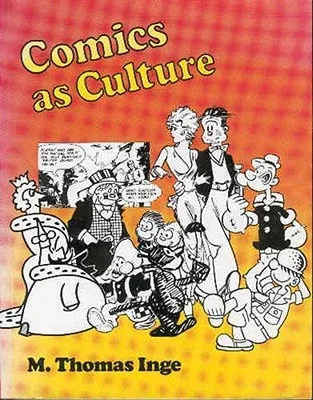M Thomas Inge
(Author)Comics as CulturePaperback, 1 February 1990

Qty
1
Turbo
Ships in 2 - 3 days
In Stock
Free Delivery
Cash on Delivery
15 Days
Free Returns
Secure Checkout
Print Length
192 pages
Language
English
Publisher
University Press of Mississippi
Date Published
1 Feb 1990
ISBN-10
0878054081
ISBN-13
9780878054084
Description
Product Details
Author:
Book Format:
Paperback
Country of Origin:
US
Date Published:
1 February 1990
Dimensions:
27.94 x
20.96 x
1.07 cm
ISBN-10:
0878054081
ISBN-13:
9780878054084
Language:
English
Location:
Jackson
Pages:
192
Publisher:
Weight:
462.66 gm

